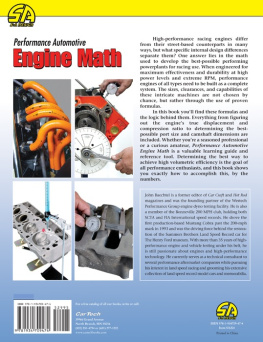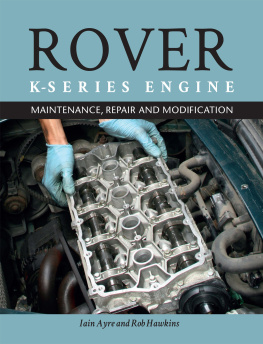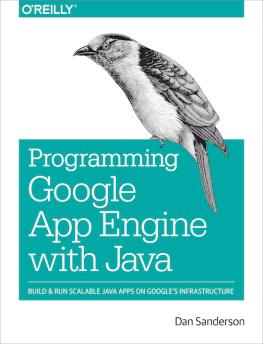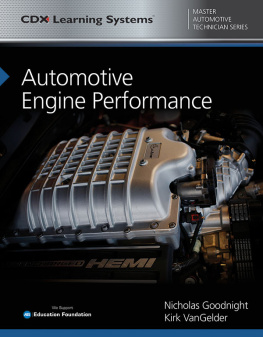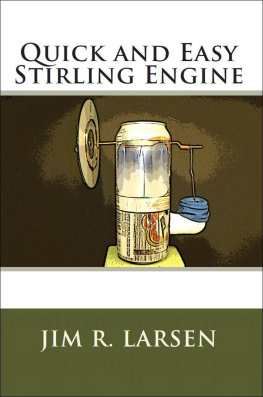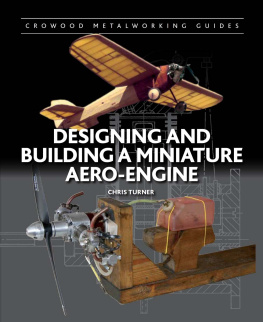John Baechtel - Performance Automotive Engine Math
Here you can read online John Baechtel - Performance Automotive Engine Math full text of the book (entire story) in english for free. Download pdf and epub, get meaning, cover and reviews about this ebook. year: 2011, publisher: CarTech Inc., genre: Home and family. Description of the work, (preface) as well as reviews are available. Best literature library LitArk.com created for fans of good reading and offers a wide selection of genres:
Romance novel
Science fiction
Adventure
Detective
Science
History
Home and family
Prose
Art
Politics
Computer
Non-fiction
Religion
Business
Children
Humor
Choose a favorite category and find really read worthwhile books. Enjoy immersion in the world of imagination, feel the emotions of the characters or learn something new for yourself, make an fascinating discovery.
- Book:Performance Automotive Engine Math
- Author:
- Publisher:CarTech Inc.
- Genre:
- Year:2011
- Rating:3 / 5
- Favourites:Add to favourites
- Your mark:
- 60
- 1
- 2
- 3
- 4
- 5
Performance Automotive Engine Math: summary, description and annotation
We offer to read an annotation, description, summary or preface (depends on what the author of the book "Performance Automotive Engine Math" wrote himself). If you haven't found the necessary information about the book — write in the comments, we will try to find it.
Performance Automotive Engine Math — read online for free the complete book (whole text) full work
Below is the text of the book, divided by pages. System saving the place of the last page read, allows you to conveniently read the book "Performance Automotive Engine Math" online for free, without having to search again every time where you left off. Put a bookmark, and you can go to the page where you finished reading at any time.
Font size:
Interval:
Bookmark:



CarTech
CarTech, Inc.
39966 Grand Avenue
North Branch, MN 55056
Phone: 651-277-1200 or 800-551-4754
Fax: 651-277-1203
www.cartechbooks.com
2011 by John Baechtel
All rights reserved. No part of this publication may be reproduced or utilized in any form or by any means, electronic or mechanical, including photocopying, recording, or by any information storage and retrieval system, without prior permission from the Author. All text, photographs, and artwork are the property of the Author unless otherwise noted or credited.
The information in this work is true and complete to the best of our knowledge. However, all information is presented without any guarantee on the part of the Author or Publisher, who also disclaim any liability incurred in connection with the use of the information.
All trademarks, trade names, model names and numbers, and other product designations referred to herein are the property of their respective owners and are used solely for identification purposes. This work is a publication of CarTech, Inc., and has not been licensed, approved, sponsored, or endorsed by any other person or entity.
Edit by Scott Parkhurst
Layout by John Baechtel
ISBN 978-1-61325-021-1
Item No. SA244
Library of Congress Cataloging-in-Publication Data
Baechtel, John.
Performance automotive engine math / John Baechtel.
p. cm.
ISBN 978-1-934709-47-4
1. AutomobilesMotorsMathematics. 2. AutomobilesMotorsMathematical models. I. Title.
TL210.B284 2011
629.2500151dc22
2010042285
Title Page:
This first-gen small-block Chevy represents a significant investment from its owner, but why spend big money to get all the best-quality parts if theyre not going to work together as a system? By researching the mathematical capabilities of the various components, and designing the engine as a collection of complementary subsystems, the final result is a super-efficient powerplant that delivers the most-possible power very efficiently.
Back Cover Photos
Top Left:
Here a complete header design has been modeled on a V-8 engine already installed in a chassis. Note the starter blocks and handwritten notes on each segment indicating the lengths and degree of alignment so the header fabricator can easily duplicate the finished model in metal.
Top Right:
Degreeing the cam requires accurately locating TDC with a degree wheel and pointer and a dial indicator set up to read lifter travel as you rotate the engine.
Bottom Left:
Determine combustion chamber volume by filling the chamber with water or alcohol from a graduated burette calibrated in cubic centimeters (ccs). Tighten a spark plug in the chamber with both valves installed. Then use a light grease to seal the deck surface. Place the plastic cc plate over the chamber and position the head so the fill hole is at the highest point. Fill the chamber and read the ccs off the burette. Divide by 16.4 to convert to cubic inches.
Bottom Right:
To calculate the average intake runner cross-section measure the height and width of the runner entry and exit with dial calipers. The entry and exit are usually different so take the average of the two cross-sections.
OVERSEAS DISTRIBUTION BY:
Brooklands Books Ltd.
P.O. Box 146, Cobham, Surrey, KT11 1LG, England
Telephone 01932 865051 Fax 01932 868803
www.brooklands-books.com
Brooklands Books Aus.
3/37-39 Green Street, Banksmeadow, NSW 2019, Australia
Telephone 2 9695 7055 Fax 2 9695 7355


Books like this rarely happen in a vacuum. This one is the result of 40 years of practical application and the good fortune of lengthy association with brilliant individuals whose willingness to share their knowledge is surpassed only by their passion for engines. Most of the contributors hold advanced degrees and have excelled in their respective fields. Most of the formulas herein are widely known. A few are recalled from a discussion of automotive math formulas compiled by Larry Atherton in the mid 1990s while working on the original version of Motion Softwares DeskTop Dyno software, and I have seen them elsewhere from time to time. Larry polled automotive engineers deep within the bowels of GM and Ford engine labs and, while most of what he learned is beyond the scope of this book, it contributed greatly to my further understanding of the complicated details of internal combustion engines and it is still available in Motion Softwares extensive online manuals for DeskTop Dyno and Dynomation. Among the many formulas I recall learning from Athertons early investigations is one for the instantaneous acceleration of the piston from TDC, which I had seen nowhere else until it was published in Forbes Airds excellent Automotive Math Handbook.
A little-known formula for calculating torque peak location and exhaust header primary tube size was contributed by my mentor extraordinaire and perhaps the most widely respected authority in our industry, Jim McFarland. Jim also afforded me the honor of checking my work for mathematical errors and penning the Foreword for the book. I should also acknowledge John Lawlor, whose groundbreaking Auto Math Handbook has improved the knowledge of countless engine enthusiasts for decades. Another significant contributor is Jeff Smith from Car Craft magazine, a valued colleague whose 30-year friendship has contributed enormously to my ever-expanding automotive database, and who generously consented to giving the manuscript a read for accuracy. Thanks also to Sigrid Michelsen and my best friend Larry Beatson for their contributions to the initial research for the book. They helped immensely with supporting details such as the origins of pi, conversion specs, and the history of complicated mathematical equations.
Many thanks also to my daughter Tamara, a graphic artist and web designer, who helped immensely with various layout issues during production of the book. Her tireless efforts helped ensure the look of the final product, and helped bring it in on time. And, of course, thanks and acknowledgements to my old Bonneville racing partner, Chuck Jenckes, a NASCAR and Formula 1 engineer and endless source of performance engine knowledge.
Finally, my unending thanks to Publisher Dave Arnold, whose patience and generosity remain unsurpassed. Likewise to Scott Parkhurst, who had my back throughout the process, shot many of the photos, and whose ability to edit a pile of gibberish into a cohesive and useful package never ceases to amaze me.
John Baechtel
John Baechtel is a former editor of Car Craft and Hot Rod magazines and was the founding partner of the Westech Performance Group engine dyno testing facility. He is also a member of the Bonneville 200 MPH club, holding both SCTA and FIA International speed records. He drove the first production-based Mustang Cobra past the 200-mph mark in 1993 and was the driving force behind the restoration of the Summers Brothers Land Speed Record car for The Henry Ford museum. With more than 35 years of high-performance engine and vehicle testing under his belt, he is still passionate about engines and high-performance technology. He currently serves as a technical consultant to several performance aftermarket companies while pursuing his interest in land speed racing and grooming his extensive collection of land speed record model cars and memorabilia
Font size:
Interval:
Bookmark:
Similar books «Performance Automotive Engine Math»
Look at similar books to Performance Automotive Engine Math. We have selected literature similar in name and meaning in the hope of providing readers with more options to find new, interesting, not yet read works.
Discussion, reviews of the book Performance Automotive Engine Math and just readers' own opinions. Leave your comments, write what you think about the work, its meaning or the main characters. Specify what exactly you liked and what you didn't like, and why you think so.

